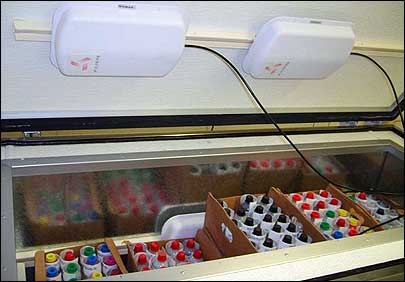A team of researchers at the Missouri University of Science and Technology‘s Electrical and Computer Engineering department has developed software designed to improve the RFID tag read rates that can be compromised by signal collisions when a high number of RFID tags are near one another.
Jagannathan Sarangapani, a professor leading the research team, began working on the technology five years ago. He and his group are now seeking a technology partner to license and commercially develop and market the technology, through the university’s Office of Technology Transfer and Economic Development. The researchers have filed for a patent with the U.S. Patent and Trademark Office, Sarangapani says.

According to Sarangapani, the most significant difference between his method and others designed to mitigate signal collisions and improve read rates—such as anti-collision technology incorporated into the tag itself—is that his is software that can be loaded onto commercially available, off-the-shelf RFID interrogators. “Ours doesn’t require any hardware changes,” he says, adding that the technology will operate with any RFID frequencies and standards, such as EPC Gen 2, and also with any proprietary RFID systems.
Even with anti-collision technologies in tags, as well as advancements in tag protocols, such as with EPC Gen 2, designed to improve read rates, most RFID implementations require reader antennas to be adjusted to reduce signal collisions. In addition, companies also often have to experiment with multiple tags, each of which feature different antenna designs, to find the best model to suit their particular application.
But Sarangapani says the technology he and his team have created and tested automatically adjusts the reader’s power in order to avoid signal collisions. He likens it to a person entering a room full of elementary children and asking them their names. “If you go in there and say, ‘Tell me your names,’ all will respond at the same time, and your ears won’t be able to decipher all the names,” he says. “So let’s say you tell the kids, ‘I am going to ask you your names, but I want you to answer not all at once, but row by row, starting from the first row.’ That’s what our technology does, by power control. It automatically adjusts the reader power, and excites the tags that are closest to the antenna first. It does this in a step-by-step manner.”
Specifically, the technology employs distributed adaptive power control (DAPC) and probabilistic power control (PPC) schemes to adjust RFID interrogator power output in response to interference levels. “These schemes sense the interference and signal strength, and then adjust the power accordingly,” Sarangapani says. “That is our algorithm—the brains behind our software.”
The researchers have conducted numerous tests in the university labs using their software loaded onto commercially available readers of passive and active RFID tags that operate at 13.56 MHz, 900 MHz or 1.2 GHz. In one such test, they employed an Alien Technology ALR-9800 RFID interrogator to read commercial EPC Gen 2 tags on bottles of water stored within a freezer (to see a demo of the test, go here and click on Demo 6), as well as other applications.
According to Sarangapani, in the test using the Alien reader, just after the bottled water was placed into the freezer, read rate was 80 percent. When the temperature dropped and the bottles of water froze, he says, the read rates dropped down to between 40 percent and 45 percent. In both scenarios, when the university’s software was loaded onto the Alien interrogator, the read rate was 99.9 percent. There were 288 tags in this particular test, but Sarangapani says the software is designed to work with an unlimited number of tags.

